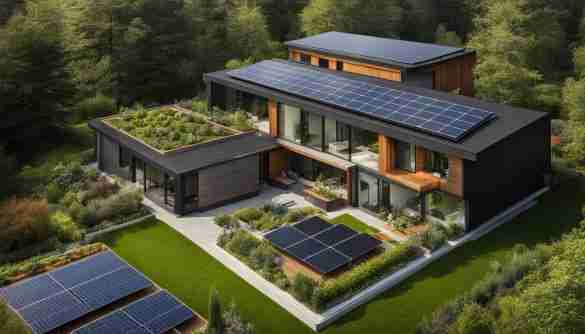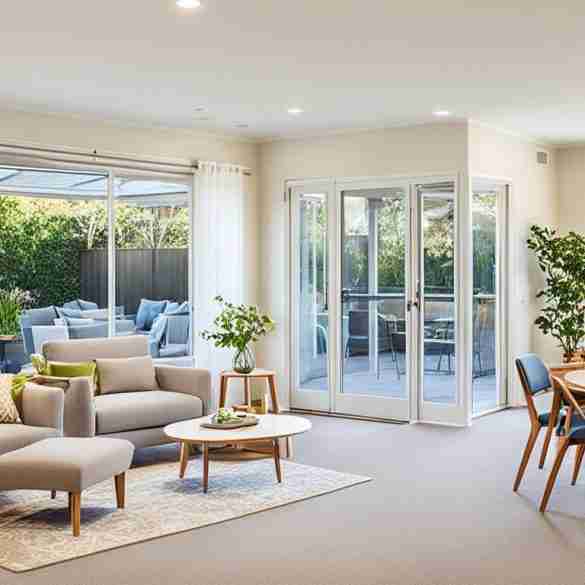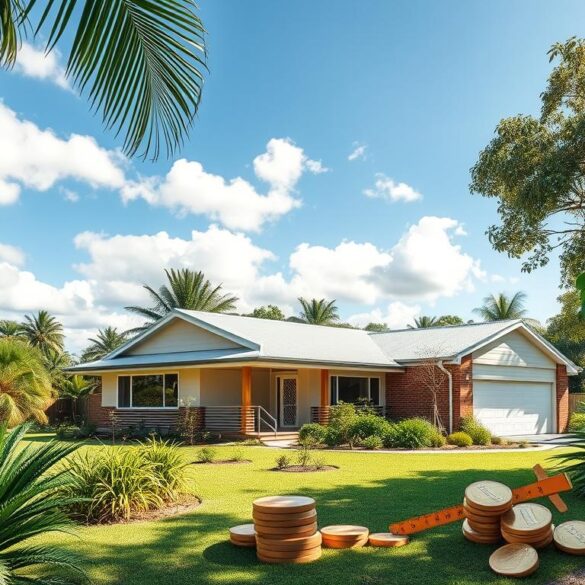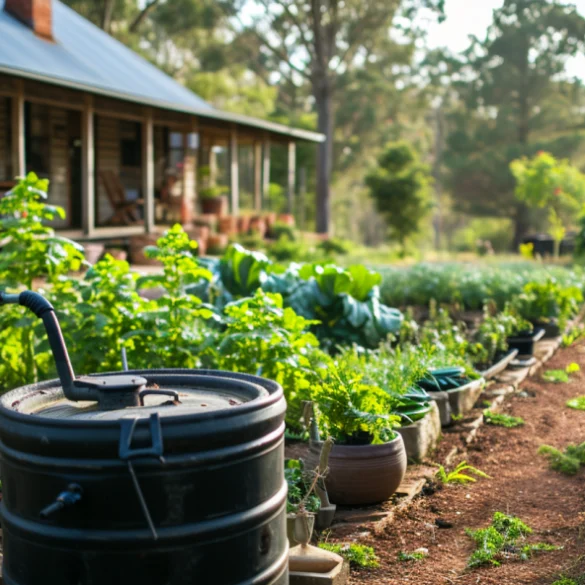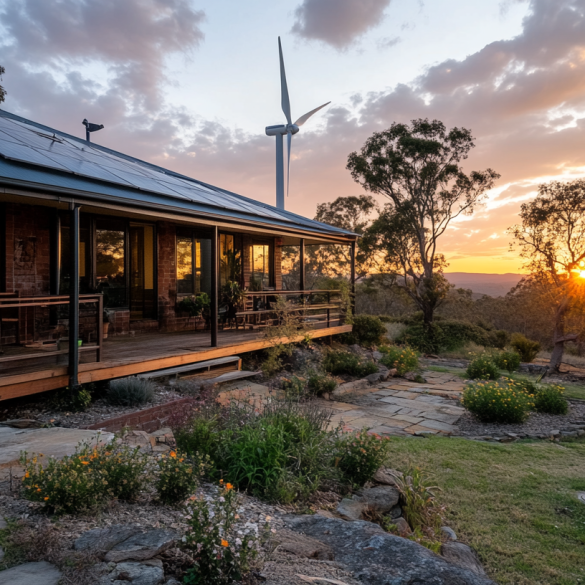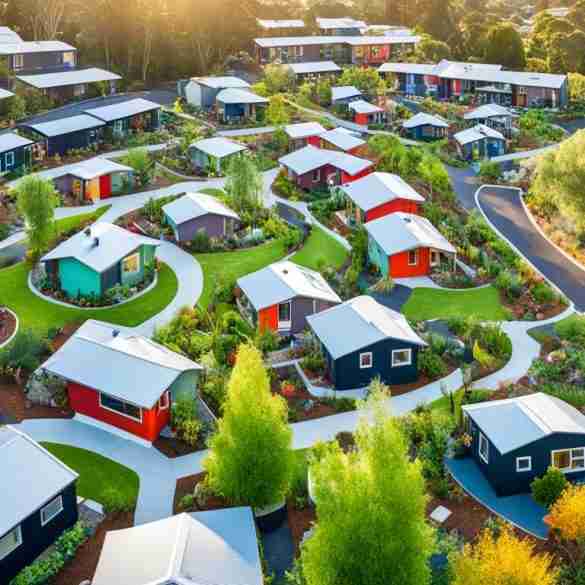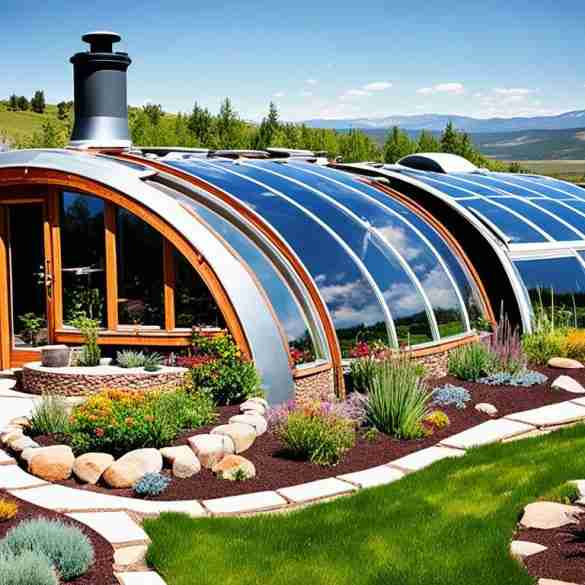Welcome to the latest feature from Sustainable Home Magazine, where your vision for an eco-friendly home design becomes more than a trend—it’s a reality. In this exploration of sustainability, discover how green home design not only benefits the planet but also offers substantial savings and enhanced living comfort. With a focus on energy-efficient building techniques, you are empowered to tailor your home’s energy consumption to serve both your budget and the environment effectively.
Whether you’re at the drawing board of your future residence or reinventing your current space, incorporating sustainable home design principles can transform your habitat into a model of efficiency and ecological stewardship. By reading on, you’ll learn how to weave together the best practices in eco-friendly home design to create a home that is as responsible as it is comfortable.
Key Takeaways
- Understand the foundations of eco-friendly home design for a healthier planet and pocketbook.
- Learn the benefits and implementation of sustainable home design elements.
- Explore cutting-edge green home design strategies that go hand in hand with modern living.
- Discover the long-term savings linked to energy-efficient building practices.
- Embrace innovative ideas to create a home that meets energy efficiency and sustainability standards.
Understanding Energy Efficiency in Home Design
When it comes to creating an energy-efficient home design, understanding the core principles is crucial for anyone looking to establish a sustainable and cost-saving living space. Efficiency is more than just using less energy; it encompasses intelligent home energy management and incorporating energy-efficient home features that align with your home’s location and contingent environmental factors.
Imagine your home as a system, where every component from the walls and windows to the appliances and lighting plays a role in its overall energy consumption. A well-designed energy-efficient home considers several interrelated factors:
- The strategic orientation of your home to take advantage of natural sunlight and shade; contributing to heating and cooling efficiency.
- Selection and placement of high-performance windows that minimize heat loss in winter and reduce heat gain in summer.
- Advanced insulation techniques create a tight thermal envelope, keeping the cold out and the warmth in, or vice versa depending on the climate.
- Smart appliances that energy-efficiently handle everyday tasks, reducing electricity draw.
- Water heating solutions that offer hot water on demand without the extra energy cost of storage.
Incorporating these elements into your plan requires careful consideration and expert advice; however, the benefits are immediate and long-term. Reduced utility bills, improved indoor comfort, and the satisfaction of contributing to environmental preservation are just the beginning.
Energy management isn’t just a technological endeavor, but a lifestyle choice that begins with design. From the initial stages of home planning, integrating energy-efficient features can significantly lower your home’s energy demand, providing a blueprint for a legacy of sustainability and efficiency.
As you prepare to align your home with these principles, you’ll find that energy efficiency is less about sacrifice and more about smart investment in your home’s future, and indeed, in the future of our planet.
Conducting a Home Energy Assessment
Embarking on the journey of constructing an energy-efficient home begins with understanding where you currently stand. An energy audit, also known as a home energy assessment, plays a pivotal role in this process. Not only does it reveal how energy flows within your household, but it also pinpoints where your energy usage could be more efficient. With the Home Energy Score, a tool established by the U.S. Department of Energy, you receive an accurate depiction of your home’s existing efficiency and practical guidance on possible enhancements.

Imagine being handed a personalized roadmap that not merely identifies your home’s energy shortcomings but also outlines measures that will reduce your carbon footprint and save money on utility bills. Your home’s architecture, insulation levels, and heating or cooling systems are all aspects that factor into your overall score. By obtaining a comprehensive view of your home’s energy function, this assessment serves as the cornerstone of energy-efficient home construction.
Maximizing a home’s energy efficiency goes beyond a single upgrade — it requires a holistic understanding of the home’s systems and structure.
Once you have a Home Energy Score in hand, you’ll be better equipped to prioritize improvements. Whether it’s enhancing insulation, sealing leaks, or updating high-efficiency appliances, each step is an investment in the long-term sustainability and comfort of your abode. The Home Energy Score serves as a benchmark from which you can measure the effectiveness of your upgrades, ensuring that you’re not just making changes, but making the right changes.
- Identify key areas where your home is losing energy
- Learn about potential improvements to save energy and reduce costs
- Gain insights into your home’s current energy efficiency with a comprehensive rating
- Receive customized recommendations tailored to your home’s unique characteristics
The benefits of executing an energy audit extend far beyond the immediate environment of your home. By adopting energy-saving practices and technologies, you contribute to a broader movement towards sustainability, demonstrating that smart, energy-efficient home construction is not just a trend, but a lifestyle choice for the future.
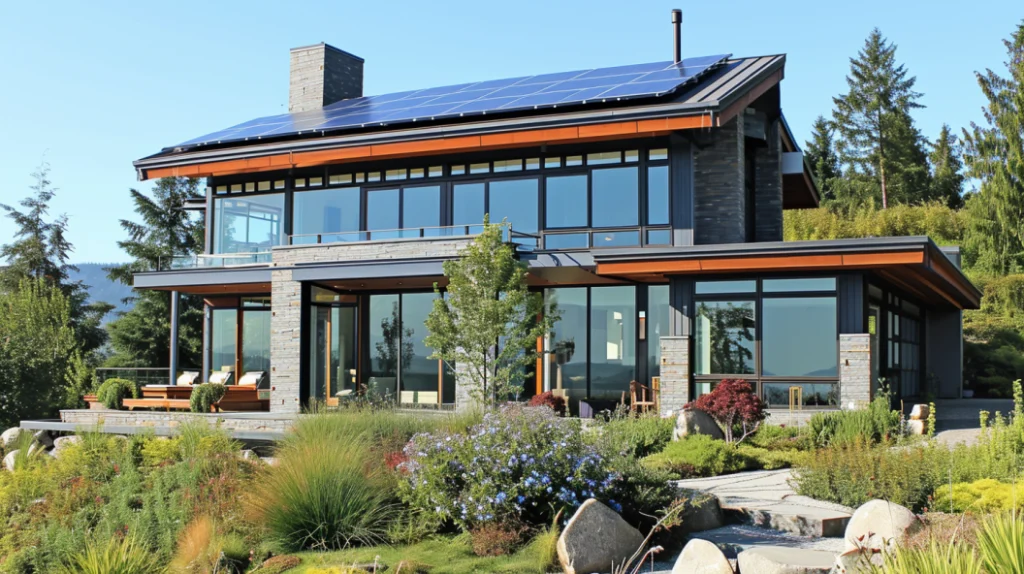
Home Design for Energy Efficiency: A Systems Approach
As you delve into creating an energy-efficient home, incorporating a systems approach begins with selecting appliances and construction methods that minimize energy consumption and maximize efficiency. This approach is not just about individual components, but how they work together to create a sustainable, cost-effective living environment. Let’s explore the essential elements of an eco-friendly, energy-efficient home design.
Integrating Appliances with Energy Conservation
Choosing energy-efficient appliances is a straightforward step in reducing your home’s energy use. These appliances, from refrigerators and dishwashers to washers and dryers, are designed to provide the same level of performance while using significantly less energy. Prioritizing these appliances will result in lower utility bills and a smaller carbon footprint.
Maximizing Insulation and Air Sealing
Insulation and air sealing are the passive champions of energy efficiency. Proper insulation in walls, attics, and floors ensures that your heating and cooling efforts aren’t wasted. Pair this with meticulous air sealing around doors, windows, and where utilities enter the home, and you’ve set a solid foundation for managing your home’s climate effectively.
Innovations in Lighting and Daylighting Techniques
Embracing advanced lighting and daylighting practices goes beyond upgrading to LED bulbs. Consider how natural light can be maximized with strategic window placement, skylights, and reflective surfaces. This not only reduces reliance on artificial lighting but also enhances the overall ambiance of your living spaces.
Optimizing Space Heating and Cooling Systems
To increase efficiency in space heating and cooling, you should assess your current systems for potential upgrades or replacements. High-efficiency furnaces, air conditioners, and programmable thermostats can make a large impact on reducing energy use while maintaining a comfortable temperature in your home year-round.
Water Heating Solutions for Eco-Friendly Homes
The process of heating water can be a significant energy drain. Implementing energy-efficient water heating solutions like on-demand or tankless water heaters, solar water heaters, and heat pump water heaters can save energy and provide the hot water you need more sustainably.
Choosing the Right Windows, Doors, and Skylights
Finally, the selection of windows, doors, and skylights is crucial. Opt for ENERGY STAR-certified products to ensure maximum insulation and minimize thermal bridging. The right choices in these areas will improve your home’s energy performance and enhance natural lighting.
Incorporating these energy-efficient measures into your home design requires careful consideration and planning. To assist in visualizing the impact of these choices, the table below compares standard versus energy-efficient options.
| Home Element | Standard Option | Energy-Efficient Alternative |
|---|---|---|
| Appliances | Conventional models | ENERGY STAR-rated appliances |
| Insulation | Minimal, standard R-value | High R-value, comprehensive coverage |
| Windows and Doors | Single pane / Poorly sealed | Double or triple pane / Properly sealed |
| Heating and Cooling | Older, inefficient systems | High-efficiency systems with smart controls |
| Water Heating | Traditional storage tank | Tankless / Solar / Heat pump solutions |
| Lighting | Incandescent bulbs | LEDs and strategic daylighting |
As part of your commitment to a greener future, consider these energy-saving alternatives. Not only will they decrease your energy bills, but they will also contribute to a more sustainable world.
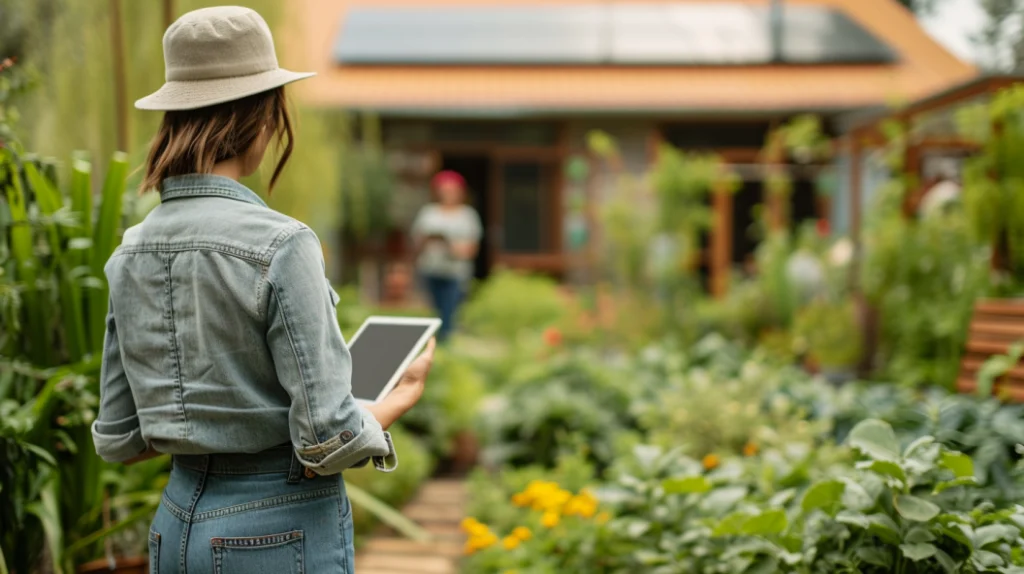
The Home Energy Score and Its Benefits
Embarking on a home energy assessment can be a transformative move towards enhancing your dwelling’s efficiency. The Home Energy Score stands as a pivotal tool in this quest, offering you a comprehensive analysis that reveals the intricate details of your home’s energy utilization.
This invaluable assessment scores your home on a scale, considers numerous factors including insulation levels, heating, cooling, and hot water systems. The score is accompanied by a detailed report that delineates both your home’s existing energy efficiencies and an array of actionable upgrades.
By adopting the suggested energy-efficient home features, not only can you decrease your utility bills, but also experience an uptick in the overall comfort of your living space. Moreover, this strategic move can significantly boost the resale value of your property, rendering it an investment that promises future leanings.
- Identify areas where energy is being wasted
- Quantify potential energy savings
- Create a roadmap for energy-efficient upgrades
- Enhance home comfort year-round
- Contribute to environmental conservation
Attaining a high Home Energy Score is like earning a high MPG rating for your car—both signify superior efficiency.
Think of the Home Energy Score not just as a diagnostic tool, but as a foresight into the sustainability and marketability of your home. With the growing importance of eco-conscious living, this score is quickly becoming a gold standard for homeowners who prioritize both fiscal and environmental prudence.
Aiming for a greener home environment or planning to put your property on the market soon? The Home Energy Score can serve as your north star, guiding you toward making informed decisions that ensure your home grows in value and cost-efficiency. Dive into the insights it offers and take the reins on carving out a home that’s economical to run and ecologically responsible.
Don’t hesitate to leverage the findings from this score to transform your habitat into a bastion of energy thrift and comfort, reaping the fruits in your energy bills and the serenity of eco-friendly living—courtesy of Sustainable Home Magazine.
Ultra-Efficient Homes and Renewable Energy Integration
As a recognized thought leader in sustainable living, Sustainable Home Magazine takes pride in showcasing the latest trends and technologies in the eco-friendly housing sector. Embracing ultra-efficient homes is not just a statement of modern aesthetics but a commitment to a sustainable future. These residential wonders are designed to diminish environmental impact through minimal energy consumption and optimal use of renewable energy systems like solar electricity and solar water heating.
Integrating cutting-edge construction techniques is pivotal in developing homes that are not just energy-efficient by today’s standards but are also prepared for the evolving demands of the future. The harmonious blend of advanced materials, smart design, and renewable energy sources defines a new era of luxury that marries opulence with ecological responsibility.
State-of-the-Art Construction Techniques
Ultra-efficient homes are a marvel of innovation, employing state-of-the-art construction techniques that underscore durability and energy conservation. Insulation plays a critical role, with materials chosen for their high thermal resistance and ability to seal homes from the capriciousness of outdoor climate variations.
Incorporating Solar Energy Systems
The marriage of solar water heating and solar electricity with sophisticated home designs underscores the commitment to self-sufficiency and clean energy use. With solar panels adorning rooftops, these houses are not just dwellings but personal power stations, capturing the sun’s bounty and converting it to usable energy.
Energy-efficient landscaping is an often underestimated but essential facet of ultra-efficient homes. By mindfully designing outdoor spaces with native plant species and strategic shading, homeowners can significantly reduce cooling costs and contribute further to overall energy efficiency.
Below is a comparative insight into how traditional homes and ultra-efficient homes differ in their approach to energy and building design:
| Feature | Traditional Homes | Ultra-Efficient Homes |
|---|---|---|
| Energy Source | Grid-dependent | Solar electricity and heating |
| Insulation | Standard insulation materials | Advanced, high R-value materials |
| Construction | Conventional building techniques | State-of-the-art sustainable techniques |
| Landscaping | Aesthetic focus | Energy-efficient design |
| Climate Impact | Higher carbon footprint | Reduced environmental impact |
By studying these contrasts, you can appreciate the revolutionary aspects that ultra-efficient homes bring to the table. Join the movement towards a greener planet by exploring renewable energy systems and eco-conscious design choices for your home.
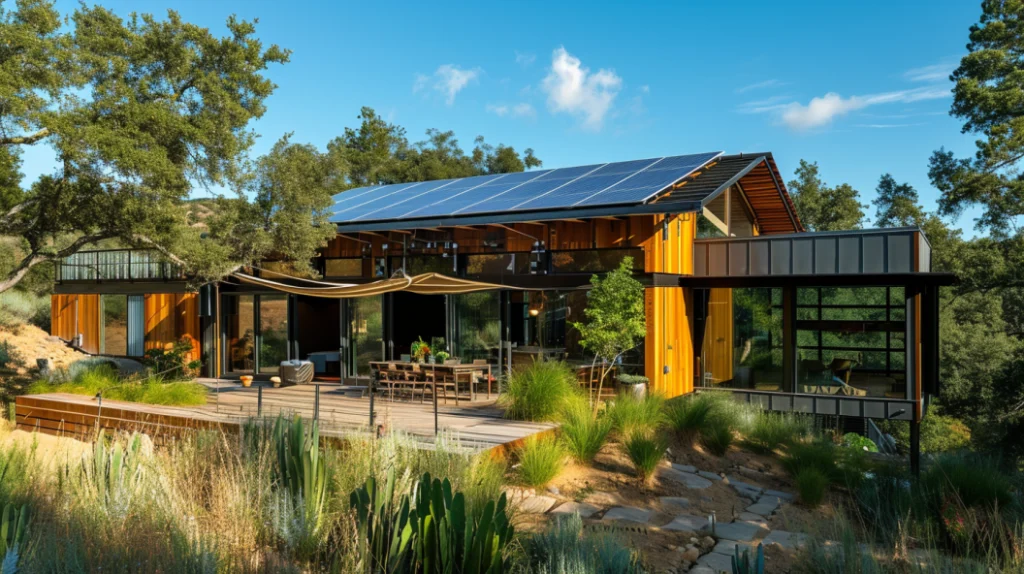
Advancements in Energy-Efficient Home Construction
As you leaf through the pages of Sustainable Home Magazine, you might notice the trend toward innovations that align perfectly with the vision of energy-efficient home construction. Let’s delve into the ingenious methods that not only promise to lower energy bills but also reduce environmental footprints.
Advanced House Framing
Advanced house framing, also known as optimum value engineering (OVE), stands at the forefront of eco-friendly building techniques. By reducing lumber use and optimizing space for insulation, this approach directly contributes to a sturdier, better-insulated home that requires less energy for heating and cooling.
Benefits of Cool Roofs
Figuratively raising the roof in sustainable construction are cool roofs. By using materials that reflect sunlight and absorb less heat, a cool roof can significantly decrease the temperature of your home, leading to reduced energy demands for air conditioning, particularly during those sweltering summer months.
Design Principles of Passive Solar Homes
Passive solar home design is a game-changer when it comes to integrating the environment into your living space. Exploiting the local climate and sun’s position, these homes can be naturally heated in the winter and cooled in the summer, reaching new heights in comfort without dependency on external energy sources.
Specialized Energy-Efficient Home Designs
Exploring the realm of energy-efficient housing, a variety of specialized design options have emerged, catering to those who prioritize environmental stewardship and cost savings. These innovative home structures boast unique features that contribute to their low energy consumption, allowing you to delve into the art of sustainable living.
Efficient Earth-Sheltered Homes
Earth-sheltered homes are a prime example of integrating architecture with nature. By taking advantage of earth’s natural insulation, these homes maintain a consistent indoor temperature year-round, leading to reduced heating and cooling costs. The thermal mass of soil acts as a barrier against exterior temperature swings, making earth-sheltered homes a smart choice for energy conservation.
Energy Considerations in Straw Bale Home Design
When designed correctly, straw bale home design can offer exceptional insulation due to the thick bale walls, which also provide a charming aesthetic. Straw, a rapidly renewable resource, serves not just as an insulator but also plays a role in reducing construction waste, and pushing the boundaries of eco-friendly architecture.
Constructing Energy-Efficient Log Homes
Energy-efficient log homes are a nod to traditional building methods with a modern twist. Logs’ natural ability to store heat helps keep the home warm during winter and cool in summer, decreasing reliance on artificial heating and cooling systems. Tailoring the design to maximize passive solar gain further enhances the energy efficiency of log homes.
Improving Energy Efficiency in Manufactured Homes
Manufactured homes have come a long way in terms of energy efficiency. Recent models are designed with better insulation and tighter construction, which reduces air leakage. Homeowners can also upgrade older models through retrofitting, such as adding insulation or installing energy-efficient windows and doors. With these improvements, manufactured homes can be as energy-conservative as their site-built counterparts.
You can find more comprehensive insights and tips on leveraging these specialized designs for energy efficiency in our latest issue of Sustainable Home Magazine, ensuring that your home not only serves as a comfortable habitat but also as a beacon of sustainability.
Incorporating Sustainable Materials in Home Construction
As you embark on constructing an eco-friendly home, the significance of the materials chosen cannot be overstated. Sustainable materials not only contribute to reducing the carbon footprint of your residence but also resonate with a commitment to global stewardship. From the foundation to the roof, every element of your home offers an opportunity for environmental consideration and energy savings.
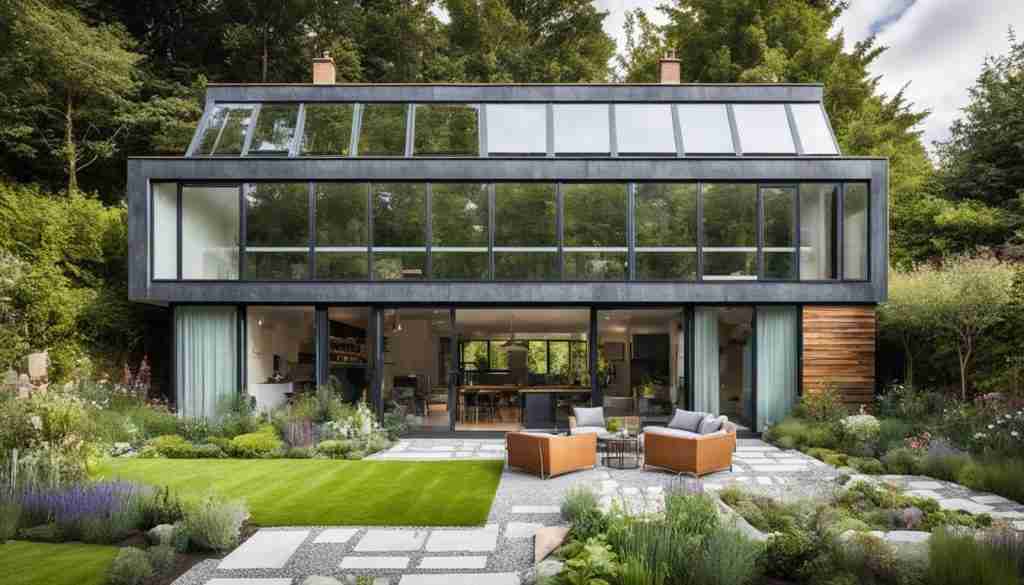
Local and Recycled Materials for Sustainability
Investing in local materials is a commendable approach towards sustainability. It minimizes the emissions associated with long-distance transportation and celebrates regional characteristics. Similarly, recycled materials pave the way for a circular economy, where the lifecycle of resources is elongated, reducing demand for virgin materials and the overall ecological footprint.
- Sourcing bricks from local kilns
- Reclaimed wood for beams and flooring
- Recycled glass for countertops and tiles
- Salvaged metal for roofing and architectural details
Extending the life of existing materials not only preserves natural resources but often renders a unique aesthetic to your home—a narrative of conservation and creativity.
Essential Insulation for an Eco-Friendly Home
The effectiveness of home insulation is crucial for maintaining energy efficiency throughout the year. By selecting insulation with a high R-value, you ensure less heat escapes during the winter and less heat enters during the summer, thus reducing the need for energy-intensive temperature control.
- Fiberglass insulation made from recycled glass
- Cellulose insulation from recycled paper
- Sheep’s wool insulation as a natural and sustainable option
- Spray foam insulation from soy-based materials
A sustainably insulated home not only trims down your energy bills but also guarantees a cozy and consistent indoor climate, making it a haven of comfort grounded in eco-consciousness.
Strategies for Air Sealing and Minimizing Energy Loss
Creating an energy-efficient home design is a multi-faceted endeavor, where each detail contributes to the overall performance and comfort of your living space. One critical component in this process is air sealing, a method that ensures your home is sealed off from drafts, preventing costly energy from seeping out and unwanted external air from creeping in. At Sustainable Home Magazine, we emphasize the importance of air sealing as a cost-effective way to enhance your home’s efficiency and comfort.
Draft stopping begins with a comprehensive check of areas prone to air leakage, such as windows and doors, chimneys, and even recessed lighting fixtures. Closed-cell spray foam insulation is an excellent tool providing both an insulating layer and creating a robust air-sealing barrier. This approach not only curbs wasteful energy loss but also improves indoor air quality by reducing the infiltration of outdoor pollutants.
Let’s take a moment to examine the strategy behind air sealing. It works by closing up the gaps and cracks that may not be visible but are equivalent to having a window open year-round. By sealing these leaks, homeowners can save up to 10-20% on their heating and cooling bills, according to the U.S. Department of Energy. But how can you tell if your efforts are successful? A blower door test, performed by a certified professional, can measure the air tightness of your home and identify areas where improvements can be made.
| Area of Home | Common Air Leak Sources | Air Sealing Solutions |
|---|---|---|
| Windows and Doors | Frame joints, Sills, and Tracks | Weatherstripping, Caulking, Expanding Foam |
| Attic and Roof | Vents, Hatches, and Penetrations | Sealant, Rigid Foam Insulation, Gaskets |
| Basement and Foundations | Joists, Sill Plates, and Utility Entry | Expanding Foam, Mastic, House Wrap |
Remember, in the journey towards creating an energy-efficient home design, each step you take, no matter how small, contributes to a greener, cost-effective, and snug dwelling. By focusing on the pivotal areas of air sealing, you’re laying the groundwork for a home that not only stands up to the elements but also respects both your wallet and the environment.
Selecting Windows and Doors for an Energy-Efficient Home
As part of your commitment to an energy-efficient home, it’s crucial to understand that the right windows and doors not only enhance your home’s aesthetic appeal but play a pivotal role in its thermal performance. The selection process can be daunting, but Sustainable Home Magazine is here to guide you through making informed decisions that align with high energy efficiency standards.
Making the Right Material Choices for Optimal Efficiency
When it comes to choosing materials for energy-efficient windows, focus on options that offer superior insulation. Well-insulated windows reduce the exchange of heat through your home’s envelope, keeping your space warmer in the winter and cooler in the summer. Along with insulation, materials such as fiberglass, vinyl, and certain woods can offer the durability and thermal retention your home needs. Meanwhile, doors should not be overlooked; they too must have a high insulation value, with materials like steel and fiberglass composites leading the pack for energy efficiency.
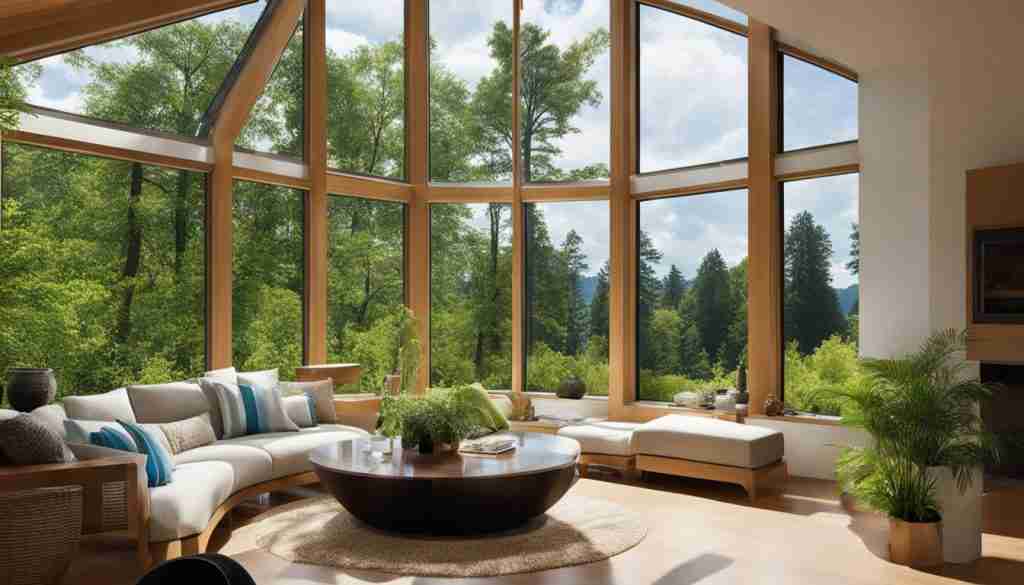
Importance of Proper Installation and Sealing Techniques
Even the most insulated window or door can underperform if not properly installed. That’s why proper installation is as significant as the product itself. Ensure that the installation is carried out meticulously, with no gaps or spaces left unsealed. Using advanced sealing techniques, such as weather stripping and caulking, will ensure that your home retains its heated or cooled air, leading to reduced energy needs and enhanced comfort.
To cap it off, remember that sustainable living starts with choices small and large, from the design of your living space to the details of its finishings. By opting for energy-efficient windows and doors, and insisting on proper installation and sealing, you’re investing in a sustainable future for your home. Always contact seasoned professionals who are versed in installing energy-efficient solutions to guarantee the best results for your eco-friendly home agenda.
Eco-Friendly Material Choices for Healthy Interiors
In pursuit of an eco-friendly home design, special attention must be directed towards materials that contribute to a healthy living space. Integrating materials that minimize the presence of volatile organic compounds is crucial in maintaining indoor air quality while using sustainable building materials serves both the environment and the building’s longevity. Let’s explore the materials that are shaping the future of health-conscious, eco-friendly homes.
Avoiding Volatile Organic Compounds in Your Home
Many traditional home construction materials release volatile organic compounds (VOCs), which can have short and long-term adverse health effects. To create interiors that foster wellness, seek out low-VOC or VOC-free options for paints, finishes, and adhesives. These safer alternatives are essential for a non-toxic home environment, significantly lowering the risk of indoor air pollution and enhancing the quality of life for you and your loved ones.
Leveraging Sustainable and Renewable Materials
Aligning with the principles of eco-friendly architecture means choosing materials that are renewable and have minimal environmental footprints. Bamboo, cork, and reclaimed wood are exemplary choices, offering durability and a reduced carbon footprint. Such materials not only serve the earth but also add aesthetically pleasing elements to your home’s interior, emphasizing nature’s beauty in alignment with sustainable living standards.
Durability and Longevity of Home Construction Materials
Materials that stand the test of time are not only practical but environmentally responsible. Sustainable Home Magazine highlights certified stone, metal, and responsibly sourced wood as key materials that embody both durability and timeless style. Incorporating these materials into your home brings a sense of permanence along with a reduced need for replacement. Hence, the investment in high-quality, long-lasting materials ultimately contributes to a more sustainable future.
Enhancing Your Home’s Efficiency with Appliances and Lighting
As a reader of Sustainable Home Magazine, you’re likely aware of the impact that your appliance and lighting choices can have on your home’s energy consumption. Upgrading to Energy Star appliances is a fundamental step in achieving a more sustainable lifestyle. These appliances meet stringent efficiency criteria set by the U.S. Environmental Protection Agency, ensuring that they consume less energy and help reduce utility bills.
Switching to LED lighting is another bright idea when it comes to energy-efficient home features. LEDs are not just about energy savings; they also offer a higher quality of light with a lifespan that far exceeds traditional bulbs. By incorporating LED lighting, you’re investing in both the environment and your home’s aesthetics.
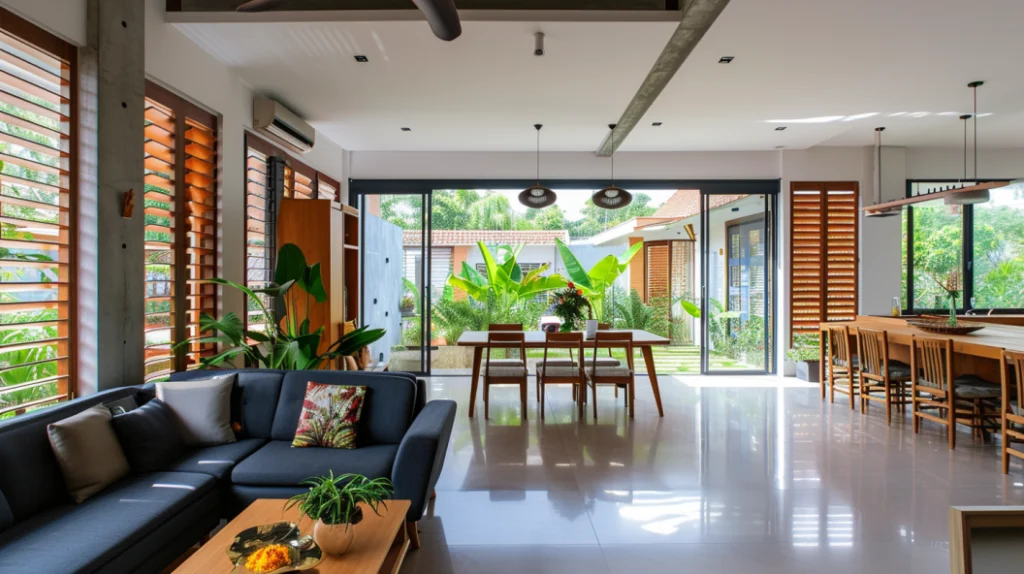
Consider this enlightening fact: LED bulbs use at least 75% less energy than incandescent lighting, according to the U.S. Department of Energy. Now, imagine the impact on your energy consumption when you combine LED lighting with Energy Star-rated refrigerators, dishwashers, and laundry machines. Together, these elements are powerful allies in the battle against high energy bills.
Energy efficiency is not just an individual perk; it’s a collective responsibility. Making conscious choices about appliances and lighting is your contribution to a more sustainable world.
Engaging in an energy-efficient lifestyle doesn’t mean skimping on quality or performance. Modern advances in technology have made Energy Star appliances and LED lighting more accessible and effective than ever. Here’s a quick summary of the benefits you’ll enjoy:
- Reduced energy consumption
- Lower utility bills
- Less frequent need for bulb replacements
- High-quality light output from LEDs
- State-of-the-art features and designs
- Contribution to environmental sustainability
By choosing appliances and lighting that align with these energy-efficient home features, you are taking a significant step towards optimizing your home’s functionality while minimizing its carbon footprint. Begin your journey towards a greener home today, and remember that each small change can have a profound impact on the health of our planet.
Final Thoughts on Eco-Friendly Home Design
In the journey toward fostering a more earth-conscious existence, eco-friendly home design emerges as a bridge between modern living and environmental stewardship. Crafting a living space that embodies efficiency and aesthetic appeal may seem like a balancing act, yet it is an achievable and vital pursuit. Throughout this series, we’ve unpacked how energy-efficient home construction not only supports the planet but also fortifies the well-being of its inhabitants—offering both immediate and future economic benefits through significant energy savings. As you delve into the realm of sustainable living, remember that the choices made today are investments into a greener, more resilient future.
Summarizing Key Aspects of Eco-Friendly Home Design
Recall the importance of thorough home energy assessments, which illuminate the path toward optimization. Advanced construction techniques—when paired with smart renewable energy integrations—lay the groundwork for homes that go beyond the standard. It’s the synergy of innovation and responsible material selection that truly captures the essence of eco-friendly home design.
Planning for Long-Term Energy Savings and Sustainability
Your action plan should have longevity at its heart; whether it’s retrofitting an existing structure or erecting a new one from the ground up. Embrace strategies and technologies that look forward, from ultra-efficient fixtures to passive solar layouts. By aligning your home’s design with the principles of sustainability, you nurture not just a habitat but a legacy—one that respects resources and cherishes the environment. Let Sustainable Home Magazine be your guide to an abode that personifies efficiency and harmony with nature.
FAQ
What is eco-friendly home design and how does it enhance energy efficiency?
Eco-friendly home design focuses on creating a living space that minimizes environmental impact by significantly reducing energy consumption. It involves using sustainable and green building materials, designing for natural light and ventilation, incorporating renewable energy systems, and ensuring insulation and sealing are effective. This approach leads to a comfortable home that saves energy and costs.
Why is understanding energy efficiency important in home design?
Understanding energy efficiency is crucial in home design as it helps to reduce unnecessary energy use while maintaining comfort. It takes into account the local climate, the home’s orientation, and interaction with various features like appliances, insulation, and systems for heating and cooling. This understanding can lead to lower energy bills and a reduced carbon footprint.
What is a home energy assessment and why should I consider one?
A home energy assessment, also known as an energy audit, helps identify how much energy your home consumes and what measures you can take to make it more energy efficient. It evaluates the home’s structure, systems, and appliances, and provides personalized recommendations for improvement, potentially leading to significant energy and cost savings.
How do energy-efficient appliances contribute to home design for energy efficiency?
Energy-efficient appliances are designed to use less energy than standard models while delivering the same or better performance. They play a vital role in reducing the overall energy consumption of a home, thus being an essential component of an eco-friendly home design strategy.
What are the benefits of maximizing insulation and air sealing in my home?
Maximizing insulation and air sealing in your home can greatly enhance its energy efficiency. It helps to maintain a consistent internal temperature, minimize energy leaks, and reduce the need for heating and cooling. This not only saves energy and money but also increases the comfort level of your living space.
What is the Home Energy Score and how does it benefit homeowners?
The Home Energy Score is an assessment tool developed by the U.S. Department of Energy that provides a rating for home energy efficiency based on the structure, insulation, and HVAC systems. It benefits homeowners by offering insights into how they can improve their energy use and identifying potential cost savings.
What are ultra-efficient homes and how do they integrate renewable energy?
Ultra-efficient homes are designed to minimize energy consumption as much as possible and then meet remaining energy needs with renewable sources, such as solar panels for electricity and water heating. These homes incorporate advanced energy-efficient construction techniques and state-of-the-art renewable energy systems, aiming for maximum sustainability.
What advancements in home construction contribute to energy efficiency?
Advancements like advanced house framing, cool roofs, and passive solar home design not only improve the structural integrity of homes but also enhance energy efficiency. They decrease the reliance on mechanical heating and cooling, resulting in lower energy usage and improved indoor comfort.
What specialized home designs are particularly energy-efficient?
Specialized designs such as earth-sheltered homes, straw bale homes, log homes, and optimized manufactured homes focus on leveraging the natural insulating properties of materials, efficient layouts, and techniques that can significantly reduce energy consumption compared to conventional designs.
Why is it important to incorporate sustainable materials in home construction?
Sustainable materials are important in home construction because they reduce the environmental impact of the building process, support local economies, and often offer superior durability and recyclability. Materials like local and recycled products, as well as high R-value insulation, contribute to the sustainability and energy efficiency of a home.
How do air sealing and energy loss minimization impact home energy efficiency?
Air sealing is critical for preventing conditioned air from escaping and stopping unconditioned air from entering, which can significantly impact your home’s energy efficiency. Minimizing energy loss through effective sealing and insulation reduces the need for heating and cooling, thus saving energy and costs.
What should I consider when selecting windows and doors for an energy-efficient home?
When selecting windows and doors, it’s essential to choose materials with high insulation values, ensure professional installation, and use proper sealing techniques. These elements are crucial for minimizing heat loss and gain as well as reducing drafts, contributing to an energy-efficient home design.
How can I ensure eco-friendly material choices for my home’s interior?
To ensure eco-friendly choices, select materials with low VOC emissions, opt for sustainable and renewable resources, and prioritize durability. Using certified wood, stone, metal, and choosing paints and adhesives with low VOC levels can create healthier indoor environments and reduce the environmental footprint of your home.
How do appliances and lighting enhance my home’s energy efficiency?
Choosing appliances with Energy Star ratings and replacing traditional lighting with LED bulbs can significantly enhance your home’s energy efficiency. These technologies use less energy, have longer lifespans, and can dramatically reduce your energy bills while minimizing environmental impact.

